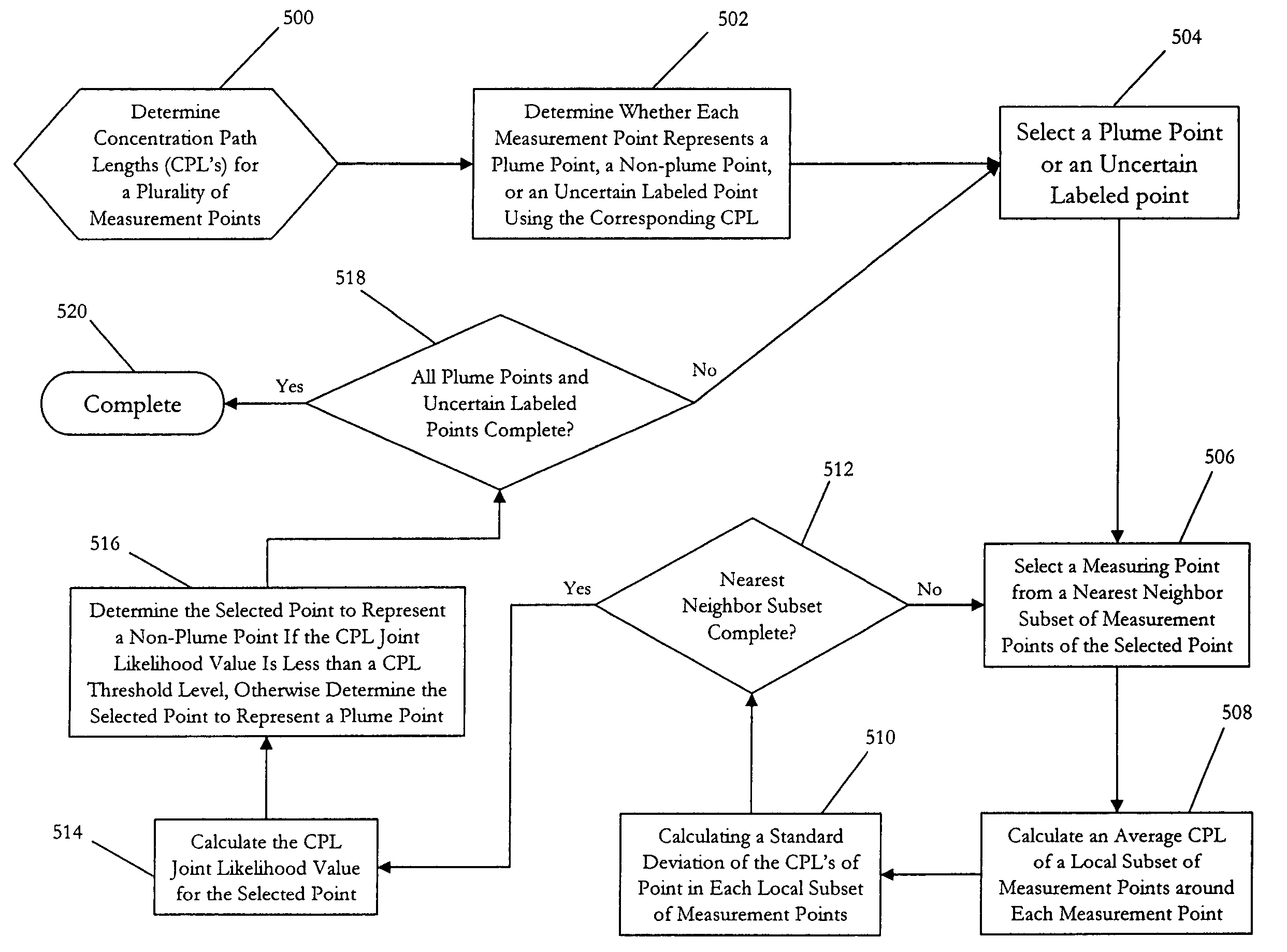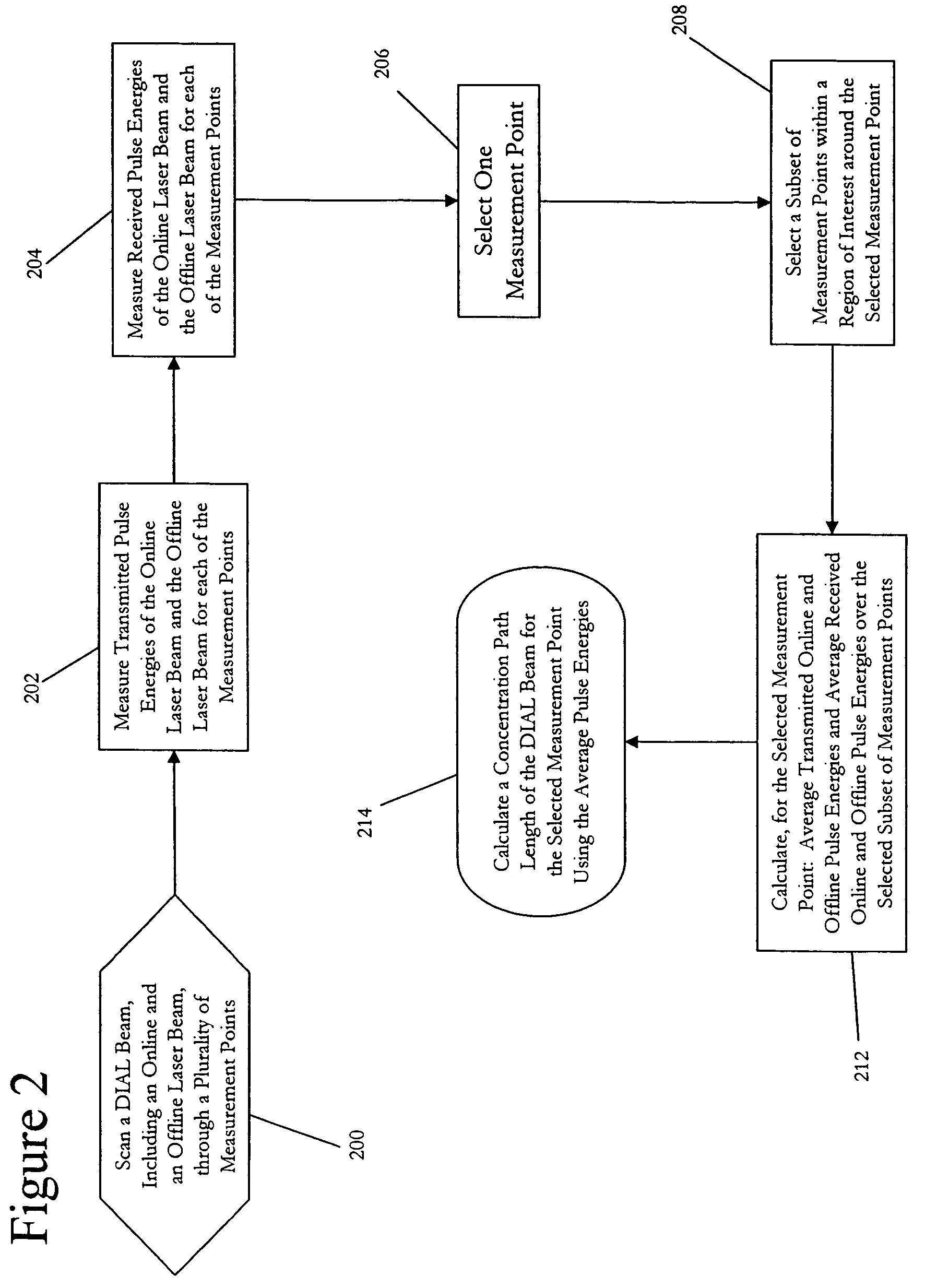Method for improving the performance accuracy in differential absorption lidar for oil and gas pipeline leak detection and quantification
a technology of differential absorption lidar and oil and gas pipeline, applied in noise figure or signal-to-noise ratio measurement, instruments, optical radiation measurement, etc., can solve problems such as inability to estimate the probability density function of plume points associated with gas leaks, spikes in cross-section and other undesirable interfering absorption effects, and special acute problems
- Summary
- Abstract
- Description
- Claims
- Application Information
AI Technical Summary
Benefits of technology
Problems solved by technology
Method used
Image
Examples
Embodiment Construction
[0029]Exemplary embodiments of the present invention utilize spectral probability density and spatial joint probability density of the concentration path length (CPL) of local non-plume points, in a Differential Absorption LIDAR (DIAL) laser remote sensing system, to optimally detect and quantify the CPL of plume-points associated with a gas leaks. The local non-plume distribution parameters (mean and variance) are adaptively estimated. The CPL_MEAN is estimated based on the local non-plume computed CPL and CPL_VARIANCE is adaptively estimated for each return SNR.
[0030]An exemplary embodiment of the present invention is an exemplary DIAL system, as illustrated in FIG. 1. This exemplary system includes two pulsed laser sources, online pulsed laser source 100 and offline pulsed laser source 102 to generate the DIAL beam. It is noted that the selection of one online pulsed laser source and one offline pulsed laser source in the exemplary embodiment of FIG. 1 is to simplify illustration...
PUM
 Login to View More
Login to View More Abstract
Description
Claims
Application Information
 Login to View More
Login to View More - R&D
- Intellectual Property
- Life Sciences
- Materials
- Tech Scout
- Unparalleled Data Quality
- Higher Quality Content
- 60% Fewer Hallucinations
Browse by: Latest US Patents, China's latest patents, Technical Efficacy Thesaurus, Application Domain, Technology Topic, Popular Technical Reports.
© 2025 PatSnap. All rights reserved.Legal|Privacy policy|Modern Slavery Act Transparency Statement|Sitemap|About US| Contact US: help@patsnap.com



